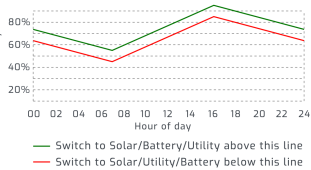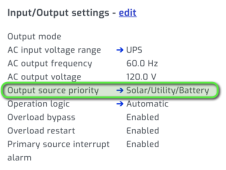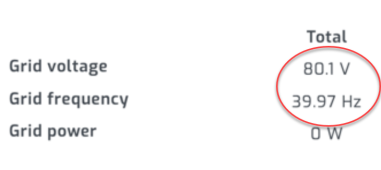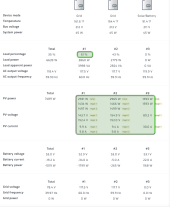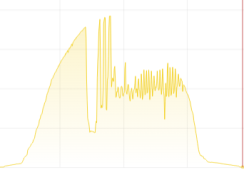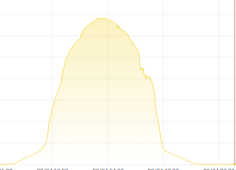Jazzmonger
Hacker at heart
I have something strange thing happening w/ my LV6548s operating in SPLIT PHASE.
Any time the load on one of the inverters goes above about 60%( which, coincidentally exceeds the available PV power), the PV power on that inverter drops to almost nothing and the grid kicks in on that inverter. I have about ~7,700+ to total available PV watts at this time of day, or approx 3,550w per LV6548 inverter. Inverters are both set to SBU.

Now, if I drop the usage to about 60% or below on both the PV kicks in at full boat, battery makes up any deficiency, and grid goes to Zero. This is what how I would expect it to work during the day.
v
Completely normal operation, but only if load is ~60%...:
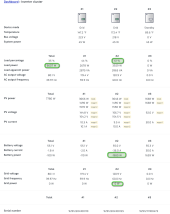
Note: the 3rd inverter only acts as a battery charger w/ some extra panels I have.

I do notice a difference in output voltages between the inverters when this happens, 112v vs 122v - not huge, but 10v difference might cause this? When it’s woking properly, the voltages are very close to each other.
I read somewhere there is a firmware update that addresses this voltage difference?
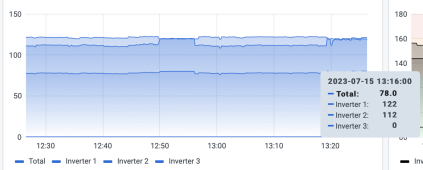
Anyone have any ideas? I’ve tried all kinds of things and nothing works short of turning some shit off….
Jeff
Any time the load on one of the inverters goes above about 60%( which, coincidentally exceeds the available PV power), the PV power on that inverter drops to almost nothing and the grid kicks in on that inverter. I have about ~7,700+ to total available PV watts at this time of day, or approx 3,550w per LV6548 inverter. Inverters are both set to SBU.

Now, if I drop the usage to about 60% or below on both the PV kicks in at full boat, battery makes up any deficiency, and grid goes to Zero. This is what how I would expect it to work during the day.
v
Completely normal operation, but only if load is ~60%...:

Note: the 3rd inverter only acts as a battery charger w/ some extra panels I have.

I do notice a difference in output voltages between the inverters when this happens, 112v vs 122v - not huge, but 10v difference might cause this? When it’s woking properly, the voltages are very close to each other.
I read somewhere there is a firmware update that addresses this voltage difference?

Anyone have any ideas? I’ve tried all kinds of things and nothing works short of turning some shit off….
Jeff
Attachments
Last edited:




